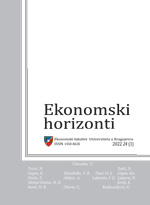THE SPATIAL MECHANISM AND DRIVE MECHANISM STUDY OF CHINESE URBAN EFFICIENCY - BASED ON THE SPATIAL PANEL DATA MODEL
Yuan Xiaoling and Chen Ali
School of Economics and Finance of Xi’an Jiaotong University, Xi’an, Shaanxi, China
In this article, the urban efficiency factors of 285 Chinese prefecture-level cities in the period from 2003 to 2012 are analyzed by using the spatial econometric model. The result shows that the development of urban efficiency between the cities positively correlates with space. And we conclude that the Industrial Structure, Openness and the Infrastructure can promote the development of such urban efficiency. The Urban Agglomeration Scale, Government Control, Fixed Asset Investment and other factors can inhibit the development of urban efficiency to a certain degree. Therefore, we come to a conclusion that, in the new urbanization construction process, the cities need to achieve cross-regional coordination from the perspective of urban agglomerations and metropolitan development. The efficiency of the city together with the scientific and rational flow of the factors should also be improved.
Keywords: urban efficiency, SBM model, spatial econometric model, factors flow
JEL Classification: R12
Ekonomski horizonti, 2016, 18(2), 93-105. Elektronska verzija objavljena 26. avgusta 2016. 10.5937/ekonhor1602093X




